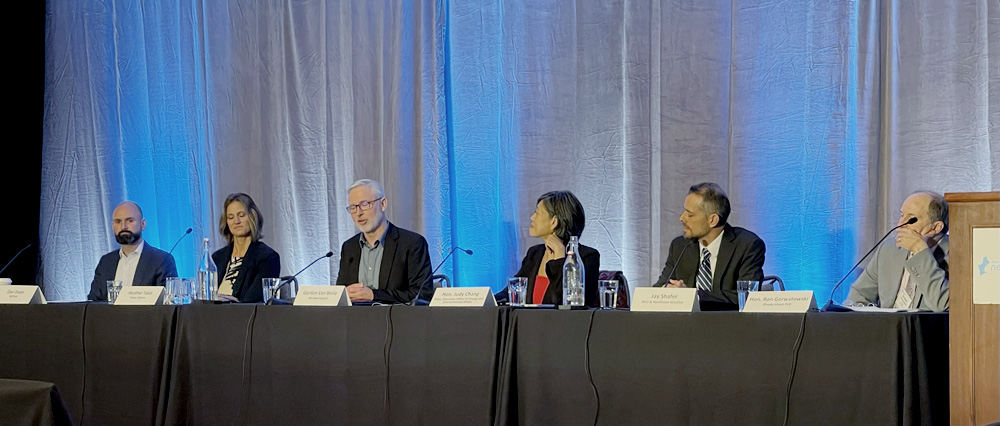PSEG is hoping that an eight-year energy tax credit in President Biden’s Build Back Better legislation will support the company’s three nuclear plants while New Jersey’s offshore wind industry — and the utility’s place in it — develops and the sector begins supplying clean energy.
On the utility’s third quarter earnings call on Tuesday, CEO Ralph Izzo said that the company is “hopeful” that Congress will pass the budget reconciliation legislation soon. The bill would provide a production tax credit of $15/MWh, with the value declining over time, he said.
“Moving forward, there needs to be broad recognition at both the state and federal level of the value of nuclear’s zero-carbon attributes, both for the quality of air today and the climate tomorrow,” Izzo told the call. “To avoid backsliding for decades to come, we need to ensure that the long-term viability of New Jersey’s nuclear generation is preserved as we bring more clean energy resources into the mix.”
Biden has struggled to secure the votes for passage of the legislation, a spending package of about $1.75 trillion, in large part because of differences between Democratic moderates and progressives about how big the bill should be and which elements should take priority. A Monday press conference by Sen. Joe Manchin (D-W. Va.) once again put the bill’s passage in doubt, but at Tuesday press conference in Glasgow, Biden said he believes Manchin will sign.
If enacted, the subsidies would support Hope Creek nuclear power plant, which PSEG owns and operates, and the Salem 1 and Salem 2 plants, which the utility operates and co-owns with Exelon. All three plants are located in South Jersey.
The state’s Board of Public Utilities (BPU) in April awarded the company $300 million in subsidies for the three facilities at $10 MWh under the state’s Zero-Emission Certificate (ZEC) program. (See NJ Nukes Awarded $300 Million in ZECs.) Program rules state that if federal subsidies are awarded to the plants, the state subsidies would be reduced, Izzo said.
New Jersey is looking to cut its emissions 80% from 2006 levels by 2050; Izzo said, “There’s widespread recognition that if we’re going to make progress, it’s got to be based upon the existing nuclear fleet still being around.”
Building Offshore Transmission Lines
To advance the state’s uptake of clean energy, Izzo also reported that PSEG recently submitted proposals to PJM and the BPU for several potential transmission solutions to deliver electricity generated by offshore wind projects to the power grid. The company announced last week that it had submitted nine proposals, collectively called Coastal Wind Link, under a competitive solicitation opened by the BPU in April. The solicitation is expected to be concluded late next year. (See New Jersey Seeks OSW Transmission Ideas.)
The proposals include ways to “create a grid out in the ocean” and suggestions on how to tie it to the grid on land in New Jersey, Izzo said. The package also outlines the “upgrades that are needed on land to support this injection of new supply” of energy, Izzo said.
The utility submitted the proposals with Danish offshore wind developer Ørsted, PSEG’s partner in Ocean Wind 1, one of three offshore wind projects approved so far by the BPU. The approved projects total 3,758 MW, and the BPU expects to hold three more solicitations, with a target of deploying 7,500 MW of offshore wind by 2035.
PSEG reported a net loss of $1,564 million ($3.10/share), a year-over-year decline from net income of $575 million ($1.14/share) in the third quarter of 2020. Non-GAAP operating earnings for the second quarter of 2021 were $495 million, ($0.98/share), compared to non-GAAP operating earnings of $488 million ($0.96/share) for the third quarter of 2020.
The loss is the result of a “pre-tax impairment loss” of $2.17 billion that stemmed from the announced sale of the company’s fossil generating fleet, Izzo said. (See PSEG Close to Fossil Asset Sale.)
